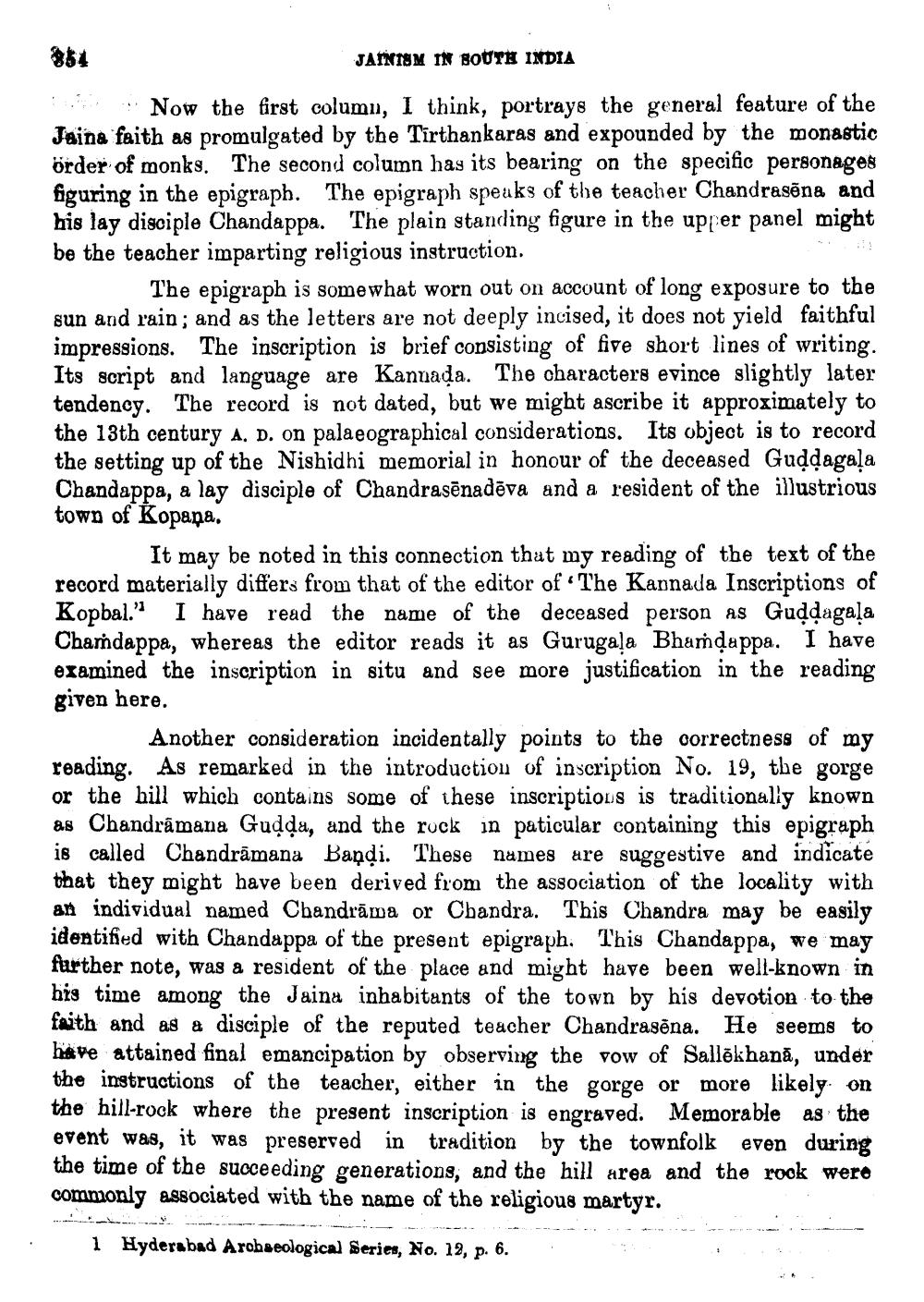________________
JAINISM IN BOUTH INDIA
Now the first columu, I think, portrays the general feature of the Jaina faith as promulgated by the Tirthankaras and expounded by the monastic örder of monks. The second column has its bearing on the specific personages figuring in the epigraph. The epigraph speaks of the teacher Chandrasõna and his lay disciple Chandappa. The plain standing figure in the upper panel might be the teacher imparting religious instruction.
The epigraph is somewhat worn out on account of long exposure to the sun and rain; and as the letters are not deeply incised, it does not yield faithful impressions. The inscription is brief consisting of five short lines of writing. Its script and language are Kannada. The characters evince slightly later tendency. The record is not dated, but we might ascribe it approximately to the 13th century A. D. on palaeographical considerations. Its object is to record the setting up of the Nishidhi memorial in honour of the deceased Guddagala Chandappa, a lay disciple of Chandrasēnadēva and a resident of the illustrious town of Kopaņa.
It may be noted in this connection that my reading of the text of the record materially differs from that of the editor of The Kannada Inscriptions of Kopbal." I have read the name of the deceased person as G Chaṁdappa, whereas the editor reads it as Gurugaļa Bhumậappa. I have examined the inscription in situ and see more justification in the reading given here.
Another consideration incidentally points to the correctness of my reading. As remarked in the introduction of inscription No. 19, the gorge or the hill which contains some of these inscriptions is traditionally known as Chandrāmana Gudda, and the rock in paticular containing this epigraph is called Chandrāmana Bandi. These names are suggestive and indicate that they might have been derived from the association of the locality with an individual named Chandrāma or Chandra. This Chandra may be easily identified with Chandappa of the present epigraph. This Chandappa, we may further note, was a resident of the place and might have been we his time among the Jaina inhabitants of the town by his devotion to the faith and as a disciple of the reputed teacher Chandrasēna. He seems to have attained final emancipation by observing the vow of Sallēkhană, under the instructions of the teacher, either in the gorge or more likely on the hill-rock where the present inscription is engraved. Memorable as the event was, it was preserved in tradition by the townfolk even during the time of the succeeding generations, and the hill area and the rook were commonly associated with the name of the religious martyr.
1 Hyderabad Archaeological Series, No. 12, p. 6.
.




